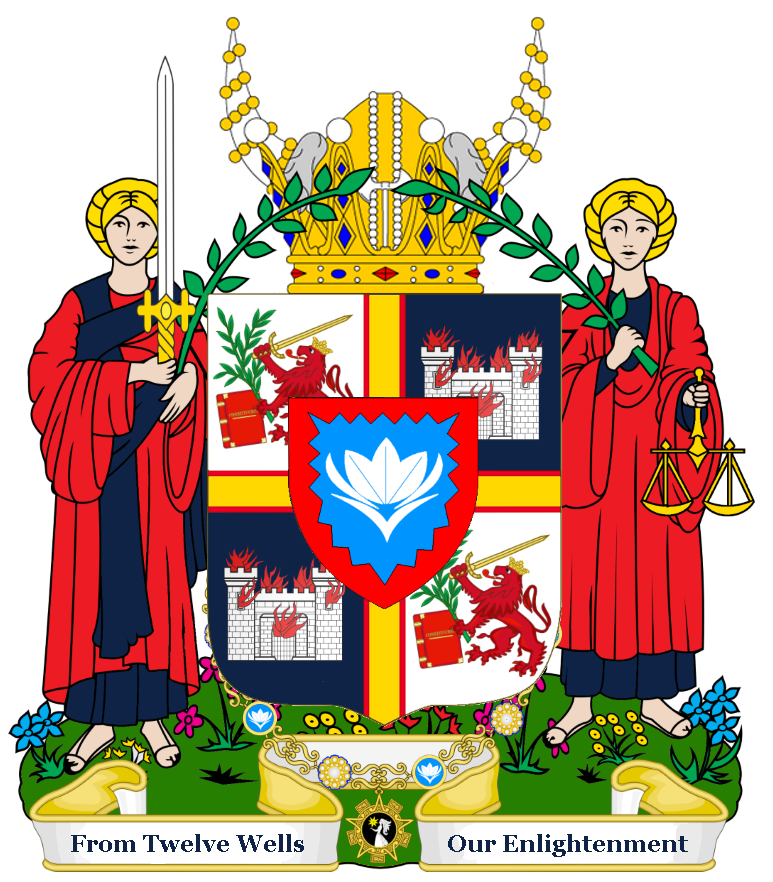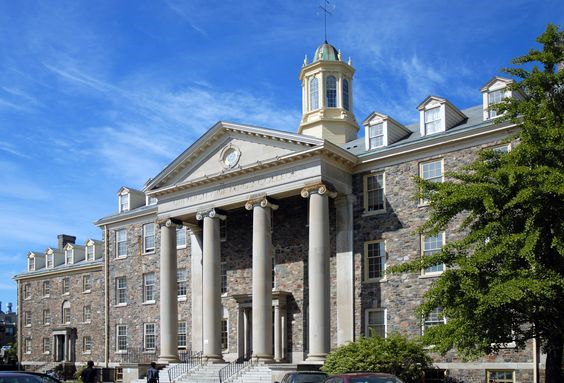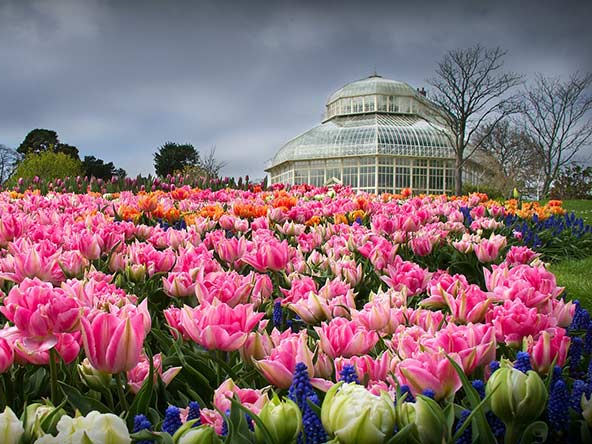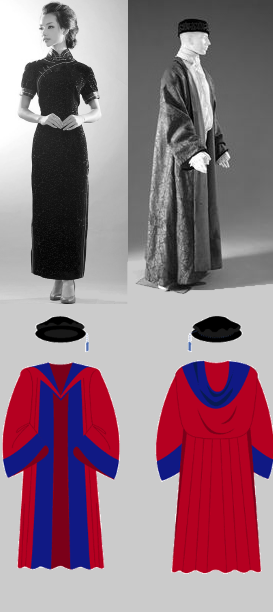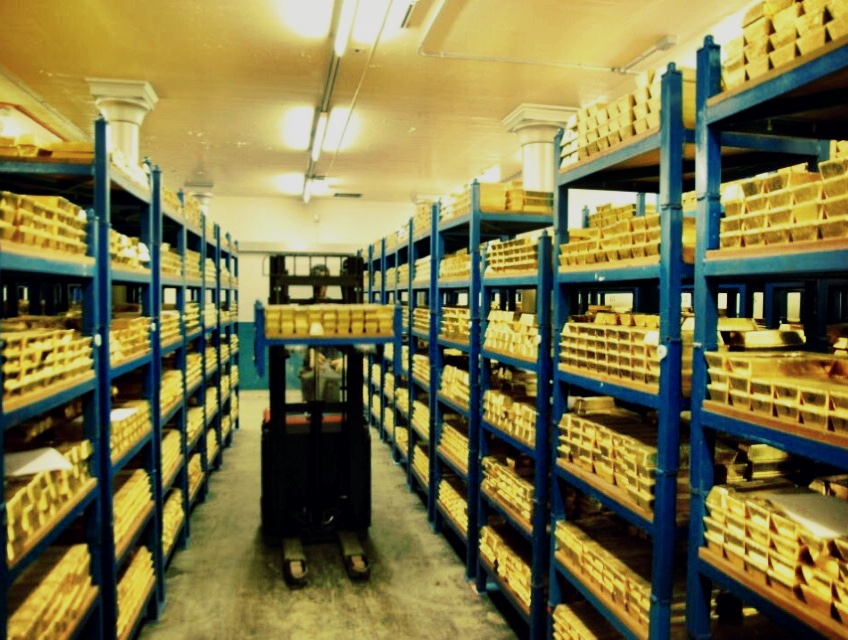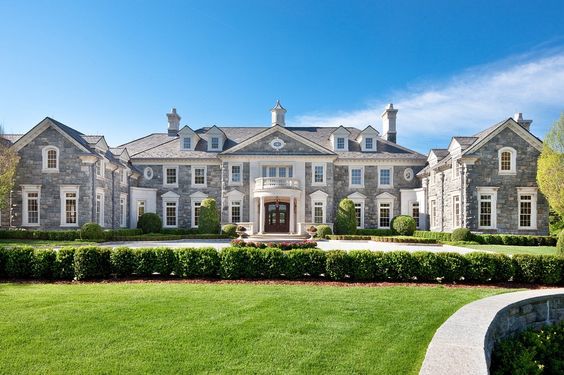People's Academy of Elwynn
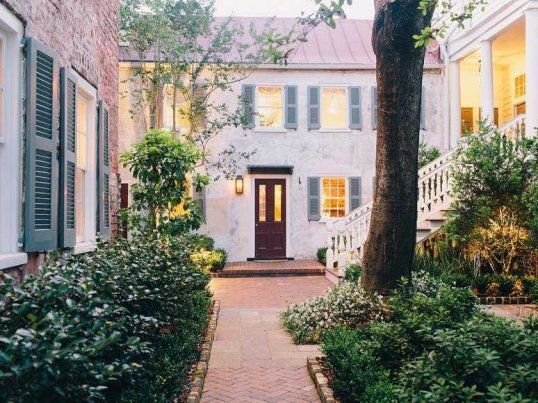
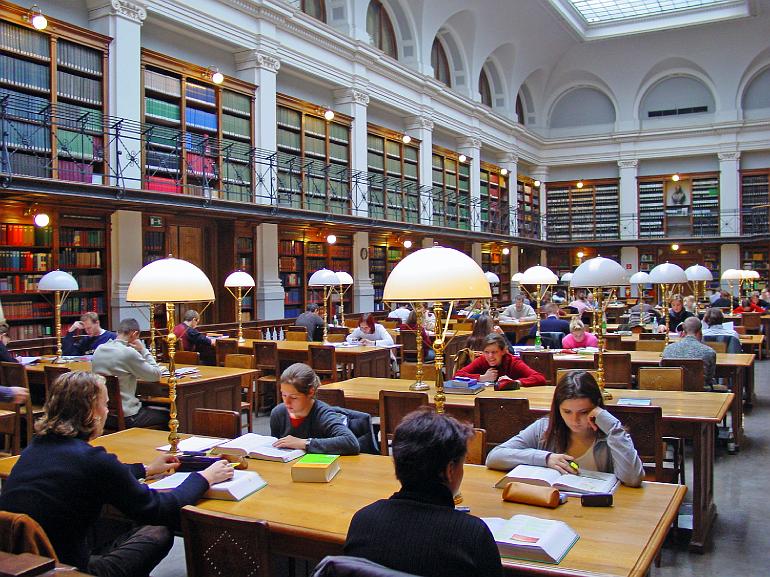
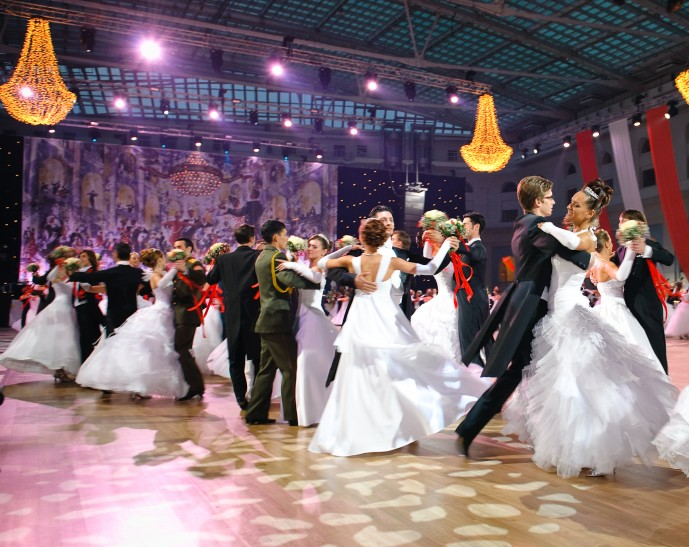
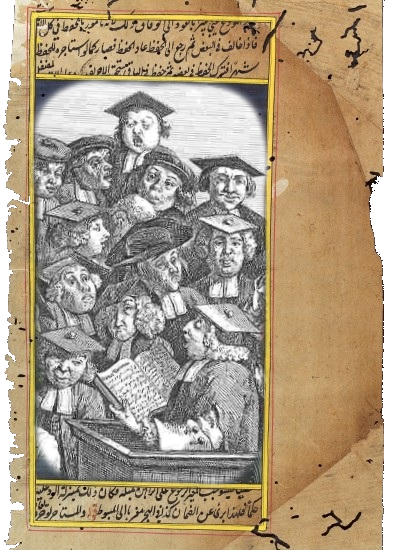
The People's Academy of Elwynn, also known as the People's Academy or simply as the Academy, is a collegiate research university and the national institute of higher education in Elwynn. The Academy is, however, not the only university in Elwynn. It has branches in every County of Elwynn.
The People's Academy is a corporation that may promulgate its own charter. Ever since its earliest days the Academy is wholly exempt from all kinds of taxation, whether nominal or actual, with regard to any monies or assets, whether nominal or actual, that it might accrue.
The Academy has played a major role in the intellectual life of the country since its early days. From its foundation forth, nigh a century ago, it has been a centre for debate and controversy in science, religion and the arts.
The Academy operates the world's oldest university museum, as well as the largest university press in the world and the largest academic library system in Shireroth.
History
The Academy was founded in 1551 through a monetary donation by Rai Avon-El as "a place for all Elwynnese to come together, study, teach, be taught and learn about our diverse cultures, our common culture and traditions". Later in the same year it received a charter from Duke Jacobus Loki.
There are, however, various individual colleges of the People's Academy of Elwynn, like Michaelion People's College and Hertug Haraldsmál College, which predate the Academy.
During the late 16th and early 17th centuries, the Academy added to its humanistic core a major new research capacity in the natural and applied sciences, including medicine.
During the Days of Independence, in the year 1589 to be exact, the People's Academy of Elwynn was restarted by order of the Regent of Elwynn, the Senator Aurangzeb Osmani. The aforesaid instrument was during the minority of King Noah of Elwynn confirmed as valid under Elwynnese Law by means of a Royal Decree issued by Steward Hallbjörn Haraldsson.
Names
In the Elw language the People's Academy of Elwynn is known as Alôqoqar Etâqon Adurellion. The Academy also had names in the other languages of the Elwynn, but those names have fallen into disuse.
Administration and Organisation
As a collegiate university, the Academy's structure can be confusing to those unfamiliar with it. The People's Academy is a federation, consisting of a plethora of highly autonomous self-governing colleges - each with its own property and income - and various faculties, schools and departments, under the supremacy of the Board of Governance.
The Board of Governance of the People's Academy of Elwynn is a self-appointing and self-regulating body which operates in accordance with its own customs, procedure and charter.
The faculties, schools and departments are located centrally within the structure of the federation; they are not affiliated with any particular college. They provide facilities for teaching and research, determine the syllabi and guidelines for the teaching of students, perform research, and deliver lectures and seminars.
Colleges arrange the tutorial teaching for their students, and the members of a faculty, school or department are spread around many colleges. Most colleges have a broad mix of academics and students from a diverse range of subjects. Facilities such as libraries are provided on all these levels: by the central administration, by the faculties, schools and departments, and by colleges (each of which maintains a multi-discipline library for the use of its members).
Board of Governance
The Board of Governance of the People's Academy of Elwynn is notionally composed of five prominent individuals from Elwynnese society:
- The Chancellor of the Alôqoqar Etâqon Adurellion: The Lord Erion (deceased);
- The Vice Chancellor of the Alôqoqar Etâqon Adurellion: Hallbjörn Haraldsson (exiled);
- The Dean of Languages: Deimos Jasonides (deceased);
- The Dean of the Library: Thorgils Tarjeisson (deceased - Trustholders in revolt);
- The Dean of Rhetoric: Fjǫrleif Hallbjörnsdóttir (exiled).
As may be seen, the Board of Governance suffers from the perennial disadvantage that prominent individuals in Elwynn enjoy heightened rates of mortality in addition to elevated prestige.
College faculties appear not to have missed the oversight provided by the Board in previous years and indeed, a decade after the Auspicious Occasion, may even be said to jealously guard their fortuitous autonomy from both the state and the gilded circles of civil society.
Colleges of the People's Academy of Elwynn
The colleges are self-governing institutions with their own endowments and property, founded or taken in as integral parts of the Academy. All students and most academics are attached to a college. Their importance lies in the housing, welfare, social functions, and teaching they provide. All faculties, departments, research centres, and laboratories belong to the Academy, which arranges lectures and awards degrees, but the Academy's students receive their tutorials - small-group teaching sessions and one-to-ones - within the colleges. Each college appoints its own teaching staff and fellows, who are also members of a department or faculty. The colleges also decide which students to admit to the Academy, in accordance with regulations issued by the Board of Governance.
In each County has at the very least one college of the People's Academy of Elwynn.
Agnesia
- Dragonsfold College, Dragonskeep;
- Victory College, Vijayanagara;
- Vinterhed College, Moss.
Alalehzamin and Utasia
Alalehzamin and Utasia
- Adabistaan, Ardashirshahr;
- Dârulfunûn-e Tanshûyuyyal, Tanshûyuyyal;
- Madarasa, Allswell (Beebullahabad);
- People's Institute, Kilkadesh;
- Riverside College, Islus;
Vale of Angularis
- Isur-Ai College, Azeroth;
- Pale College, Metyl Themar.
Amokolia
Amokolian Islands
- Björkaborg College, Anun;
- Dragon College, Luther'enville;
- Stronghold College, Fort Fardë;
- Vineyard College, Niü London.
Vattnaland
- Bailicour College, La Terre;
- Conservatoire Amokolinoise des Arts et Métiers, La Terre;
- Dewalque College, La Terre;
- École des Mines, La Terre;
- École Supérieure de Techniques Avancées, La Terre;
- École Polytechnique, La Terre;
- Highland College, Peterburg;
- Quatrain College, Malexander;
- Vrouwe Anika College, Alderbaai.
Araxion
- Tower College, Araxion Tower;
- Unicorn College, Visqeoor;
- White Orchid College, Araxion Tower.
Cape Farewell
- Caligae People's College, Caligae;
- Michaelion People's College, Michaelion;
- Vatnaminne People's College, Vatnaminne.
Eliria
- Hartlepool College, Echo;
- Eliria University College (formerly, King's College);
- Keyrrey College, Fenririe.
Illumination and Cimmeria
Cimmeria
- Lewis College, Minas Valhalla;
- Snealandyx College, Minas Aullarion;
- Wolfraven College, Wolfraven.
Illumination
- Athiël College, Port Illumination;
- Monto College, Azshara;
- Verion College, Port Illumination.
Íseirdia-la-Vraulalennir
- Athenaeum College, Civitas Nova;
- Elk Creek College, Elesmari;
- Queen Lane College, Frieden;
- Opplysta Smørvirket College, Smjörkýr;
- Tundra College, Glenfiddich.
Raikoth
- Vankarha Su Mek, Tala.
- Hávamál College, Thorgilsby;
- Heimskringla College, Esthersbýur;
- Hertug Haraldsmál College (now the Everstone Royal Institute of Goldshire), Avaldsnes;
- Hryggjarstykki College, Joelsby;
- Konungsbók College, Spring Valley;
- Rígsþula College, Hyfrost;
- Völuspá College, Fjǫrleifsbýur.
Schools, Faculties and Departments
In addition to the colleges, the People's Academy of Elwynn is made up of numerous departments, faculties, schools, syndicates and other institutions. Members of these are usually also members of one of the colleges and responsibility for running the entire academic programme of the university is divided amongst them. The Academy also includes the National Institute of Continuing Education, a center for part-time study.
Within the People's Academy of Elwynn "Schools" are broad administrative groupings of related faculties and other units. Each has an elected supervisory body - the "Council" of the school - composed of representatives of the constituent bodies. Presently there are six schools:
- Arts and Humanities;
- Biological Sciences;
- Clinical Medicine;
- Humanities and Social Sciences;
- Physical Sciences;
- Technology.
Teaching and research in the Academy is organised by faculties. The faculties have different organisational sub-structures which partly reflect their history and partly their operational needs, which may include a number of departments and other institutions. In addition, a small number of bodies entitled "Syndicates" have responsibilities for teaching and research, such as People's Academy Assessment, the People's Academy Press, and the People's Academy Library.
Dress Code
The People's Academy of Elwynn has a long tradition of academic dress, which continues to the present day. Academic dress is worn very often at the Academy, and every student and member of the teaching staff must obtain the dress prescribed by Board of Governance regulations. Other staffers dress in accordance with local customs.
Coat of Arms
The Coat of Arms of the People's Academy of Elwynn is full of symbolism which refers to the Academy and Elwynn's history.
The Shield
The shield is quartered by a cross of gold, fimbriated in red. The colour red symbolizes the cross-pollination caused by the interaction at the People's Academy of Elwynn of staff and students who hail from all the Twelve Peoples of Elwynn and abroad.
The first and fourth quarter show a red lion on a white field wearing a golden royal crown. The lion is holding a laurel branch and a golden sword in its paws.
- The golden royal crown denotes the fact the knownledge is king in the Academy as well as its sovereignty and independence from the Elwynnese State.
- The colour red of the lion's skin and the golden sword represent the zeal with which the People's Academy of Elwynn defends its academic freedom.
- The laurel branch symbolizes the Academy's innumerable scientific achievements.
- The colour white represents the purity of the manner in which the People's Academy of Elwynn operates.
The second and third quarter depict a burning castle of a blue field.
The burning castle symbolizes the violent past of both Elwynn in general and the Kingly City of Eliria - where King's College, the first establishment of the People's Academy of Elwynn - is situated.
The colour blue represents the Sacred River Elwynn.
The Supporters
The supporters are two golden-haired Ladies dressed in the academic robes of the People's Academy of Elwynn who are each holding a laurel branch in one hand.
In addition to the laurel branch the Lady to the viewer's left is holding a sword in her other hand, symbolizing the weapon that knowledge is; the Lady to the viewer's right is holding scales in her other hand, repressenting the careful and balanced way the scientists of the People's Academy of Elwynn operate.
The Crown and the Collar
The crown is the Royal Crown of Elwynn. The collar is the collar of the Order of the Silver Orchid, which is the order of chivalry of the Elwynnese Union that is bestowed by the White Orchid Throne for outstanding deeds in governance, law and services to the Elwynnese Union.
The Compartment
The Compartment is a green field strewn with flowers of several colours.
The green field symbolizes the fertile ground for academic achievement that the People's Academy of Elwynn is; the flowers represents the colourfulness of the Academy's body of staff and students who from all the Twelve Peoples of Elwynn as well as from outside the Lands of Elwyna.
The Motto Scroll
On the white gold-edged motto scroll is written with blue letters the motto of the People's Academy of Elwynn: From Twelve Wells, Our Enlightenment.
The white symbolizes the purity of the Academy's culture, the gold represents the enrichning of Elwynn caused by the Academy, and the blue symbolizes the River Elwynn.
The Twelve Wells in the motto refer to the Twelve Peoples of Elwynn.
Notable Alumni, Students and Academics
- Aasmund Vigeland (Caligae People's Academy, Civil Engineering and Physics)
- André Koeurdélan, Alexandrian politician (Eliria University College, nowadays called King's College, Ethnology, Anthropology and Religious Studies)
- Aviel Muur (Adabistaan, Political Science with Elfinshi Studies);
- Hallbjörn Haraldsson (Hertug Haraldsmál College, History and Political Science);
- Irijah Prosper Arturion (Eliria University College);
- Kaiseress Noor of Shireroth (Adabistaan, History and Philosophy);
- King Noah of Elwynn (King's College, History and Political Science);
- Soreaa Isurui (Caligae People's College, Elw Language and Elw Literature).
